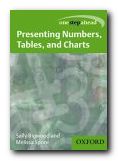sample from HTML program and PDF book
1. A general rule for the presentation of numbers (excluding those dealing with science and mathematics) is that numbers below a hundred are written, and numbers above one hundred are presented by digits:
| four brown horses | ten years old |
| she is twenty-two | 3,500 tonnes of coal |
| 286 casualties | 200 metres long |
2. Notice that numbers expressed in more than a single word are hyphenated:
thirty-six ninety-eight fifty-five
3. Even above one hundred, round numbers are often expressed as words:
one thousand two million three billion
4. However, very large numbers are often expressed in a combination of figures and units of millions or billions:
Social benefit payments were running at $7.8 million per day compared with only $5.6 million a year ago.
5. Where two different series of quantities are being discussed, it may clarify matters if words are used for one series and numbers for the other:
Ten wards in the county emergency hospital contained 16 beds each, but fifteen others contained as many as 30.
6. The following example taken from a piece of journalism illustrates this general rule with mention of numbers both below and above one hundred.
One of the nuclear weapons systems would be a four-boat Trident strategic missile fleet with 512 warheads compared with the 192 urged by Labour and the Liberal Democrats to match the numbers in the Polaris fleet it replaces.
7. Do not begin sentences with a numeral (such as 46 or 107). Either rearrange the sentence, or write out the number (as Forty-six or One hundred and seven).
8. Decimals and percentages should be expressed in figures, and the word ‘percent’ should be written out, except in scientific writing:
With interest currently running at 8 percent, the total monthly repayment figure would be almost $2.5 million.
9. When expressing dates before the Christian era, remember to put the numbers of the earlier date first, and give the later date in full to avoid confusion:
Nebuchadnezzar (1792-1750 BC) not Nebuchadnezzar (1792-50 BC)
10. Dates after the Christian era should be expressed in the same way, but with the era written first:
Nebuchadnezzar (1792-1750 BC) but Pope Sixtus III (AD 432-440)
11. The use of Roman numerals is normally confined to the names of monarchs and popes, for the acts of plays, and for the volumes and subdivisions of books:
| Edward VI | Pope Pius IV |
| Othello III.iv.18 | Chapter XII |
| Part III | Act V, Sc 3 |
12. In numbers above a thousand or more, the thousands are marked off with a comma:
10,000 BC 1,500 metres
13. Notice that the plurals of numbers are formed by the addition of s alone. The apostrophe is not required:
in the 1920s pilots of 747s
© Roy Johnson 2003
Buy Writing Essays — eBook in PDF format
Buy Writing Essays 3.0 — eBook in HTML format
More on writing essays
More on How-To
More on writing skills
